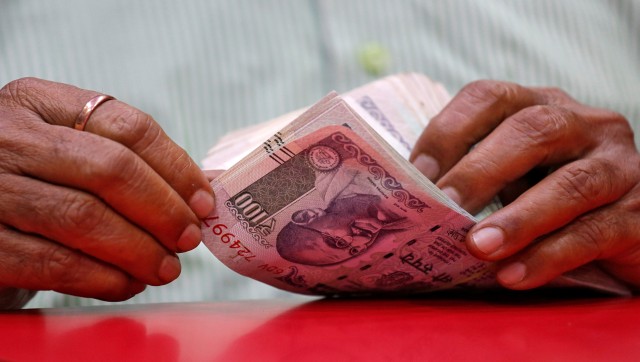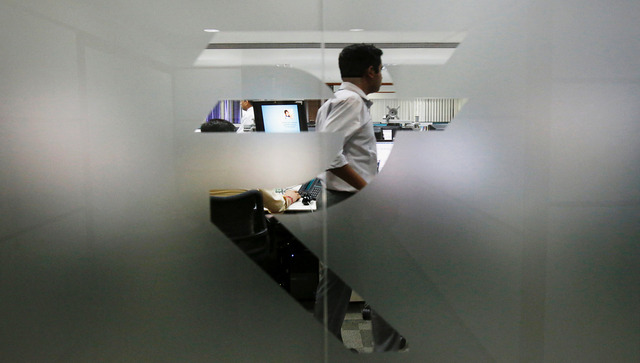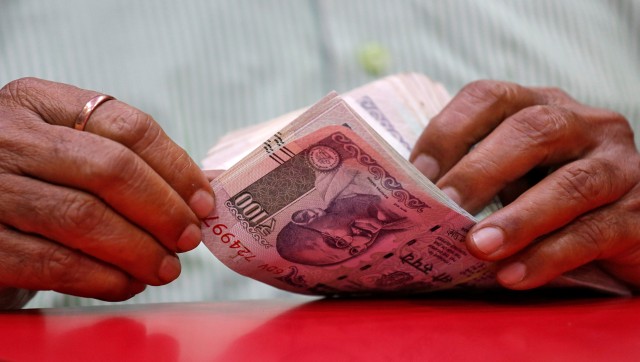What a miserable start to the week for the rupee. On Tuesday, the rupee raced past its all time low to hit 52.48 against the US dollar in the early morning trade. The currency’s earlier all-time low was 52.19, which it hit against the dollar on 3 March 2009.
And it’s seems there’s no going back - at least for now.
According to an AFP story, the local currency has tumbled by more than 4 percent against the dollar in the past six days alone, hammered by fears that the eurozone sovereign debt crisis is gradually shifting from peripheral nations to the larger economies of the zone and the fact that no deal could be reached between US lawmakers on tackling the country’s massive debt.
Those fears are driving investors to dump relatively riskier emerging market assets in favour of safe haven currencies like the greenback.
There’s also high demand from oil refining companies to settle month-end import bills. Oil refining companies are the biggest buyers in the dollar market in India. Oil accounts for one-third of the country’s import bill and is also the largest component.
Moses Harding, executive vice-president and head of wholesale banking at IndusInd Bank, warned the rupee could fall as low as 54-56 against the dollar.
That prediction might have seemed unbelievable even five months ago, but now that the rupee is at 52, it doesn’t seem that fantastically outrageous any more.
“There has been sudden reversal in rupee fundamentals driven by widening trade gap (the difference between exports and imports) and reduced capital flows,” he wrote in a note to clients. “The Reserve Bank of India’s ability to intervene is also hampered by squeeze in system liquidity and limited dollar reserves in its balance sheet.”
While he also believed that the rupee’s one-way slide from around 43 to 52 was excessive, he said it would take at least six months before the situation reversed.
More problems for the RBI
The falling rupee will complicate matters for policy-makers by pushing up the price of imports (especially oil, which feeds right through the economy) and fuelling inflation further when it is already at 9 percent. It also means RBI governor D Subbarao, despite all his intentions, will not really be able to take the pressure off raising interest rates.
Even thought the rupee is Asia’s worst-performing currency, having fallen around 14 percent this year, most experts believe there is more pain to come.
“There’s nothing preventing the rupee heading into uncharted waters,” Abheek Barua, chief economist at HDFC Bank, told AFP .
On Tuesday, the rupee was already swimming towards them, especially after Economic Affairs Secretary R Gopalan said the central bank had “limited ability” to intervene in the foreign-exchange market to curb the rupee’s sharp slide.
That means the best the markets can hope for now is that the rupee, will somehow, reverse course on its own.
Is that likely? Not really.“The chances of a self-correction in the currency are low and would depend on foreign direct investment and capital inflows,” Shubhada Rao, chief economist at Yes Bank told CNBC TV18.
Already, foreign investment in equity markets have been subdued this year, at around $663 million compared with the $29 billion invested in 2010, according to the Securities and Exchange Board of India. There are rising fears that a further fall in the rupee could prompt foreign investors to pull out of stocks, further driving the currency lower in a vicious circle.
Even if the rupee recovers, it is unlikely to rise above 50-51 against the dollar, noted IndusInd’s Harding.
That’s making companies, even exporters, very, very nervous. On Monday, one of India’s top software services exporter, Infosys, told_Dow Jones_ newswires that it expects the rupee to strike a new all-time low and is, therefore, keeping its currency hedges light.Chief financial officer V Balakrishnan admitted the volatility in the rupee, however, is complicating Infosys’ bets.
It won’t be the only one feeling that way.
**Watch video:**Re to touch 54-56/$; chance of self-correction low: Experts


)




)
)
)
)
)
)